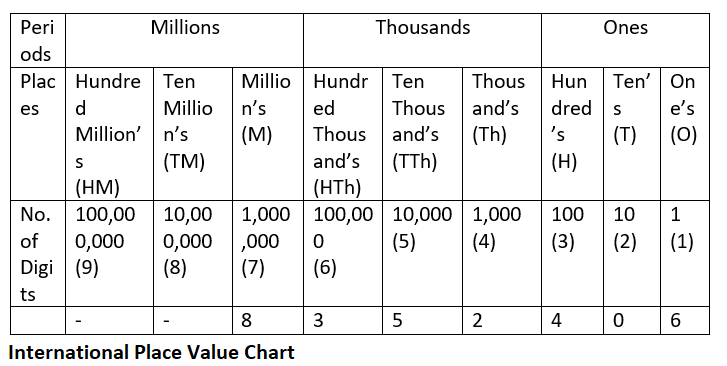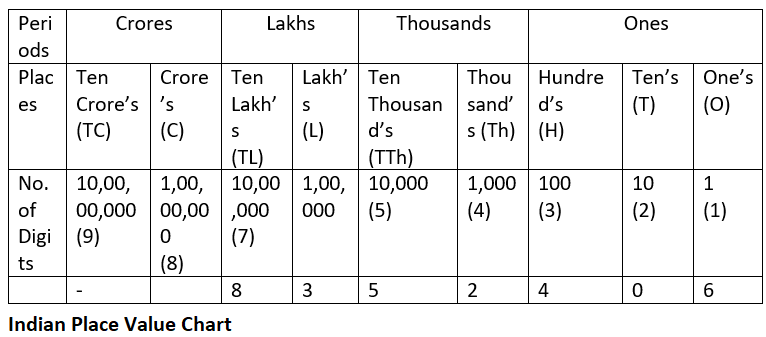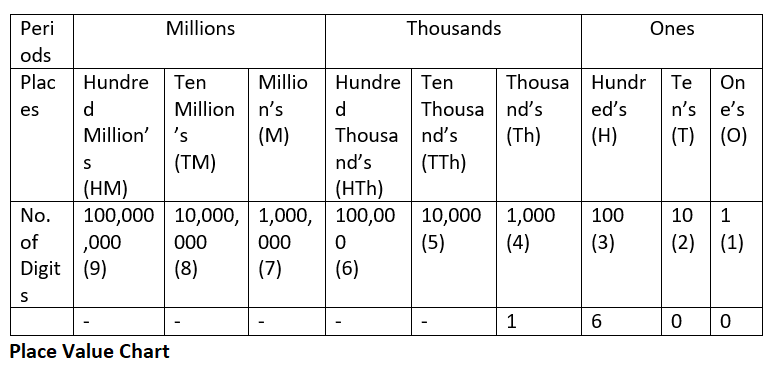1600 in words
1600 is written as “One-thousand-six-hundred” in words. In mathematics, a number is formed by the combination of digits in different positions. So, the numbers get a value or a count according to the digits and their place values in the number. The number written in numerical form is expressed or spelled by its value or count. That value or count of the number is written in words of any language. Here, the text “Two-thousand-six-hundred” is in the English language. Thus, to express a number we need to specify that number in words. We know that English is an international language, and English is commonly used all over the world. For example, a laptop costs “$1600” in numerical form and we can spell and write it as “one-thousand-six hundred dollars” in English.
Digits in Mathematics
There are only ten digits in the entire Mathematics. The ten digits are - 0, 1, 2, 3, 4, 5, 6, 7, 8, and 9. With these ten digits, the entire number system is defined. To write any number, a big number or a small number, these digits are written together in a systematic order. That order is defined by the concept named “Place value system” in mathematics.
The important role of digits in forming numbers
The ten digits – 0, 1, 2, 3, 4, 5, 6, 7, 8, and 9 are used for writing entire numbers in mathematics. So, these digits play an important role to form numbers. In a number, these digits are arranged in such a way that the place of the digit holds a certain value according to the place value system. Thus, the number will get a value to apply in further applications in Mathematics like arithmetic operations.
Importance of numbers in our daily life
A World without numbers cannot be defined. From the birth we take on the earth we are related by the numbers like from the day we get our “Date of Birth”. The Sunrise, the Sunset, the day, date, time, etc., everything is related to a number, Mathematics.
Here are a few applications of numbers in the daily life of mankind:
Date and Time, and Money which includes numerals.
Food, Clothes, Shelter, Furniture, etc., are measured and valued by numbers.
What is a place value system?
The system which is used for determining the value of a digit in a particular position in the number is said to be the Place value system. Here, the system is mainly composed of two things, “Place and Place value”.
PLACE:
Since we know that, a number is made of digits (one or more than one), we have places.
A number may be one digit or two digits or three digits or infinite digits. So, in number, these digits are placed one by one or one after the other.
Thus, these positions of the digits are nothing but their places.
In a place value system, a few places or positions are grouped into periods.
PLACE VALUE:
The place of each digit in a number has a certain value to figure it out for counting, or for calculating, or naming it in words. Such a value for the position of a digit in a number is said to be its place value.
Here is the position of the digit’s changes, then its place value also changes.
For example, The number 65,432 has five digits 2,3,4,5,6 in certain positions. If the digits are shifted, i.e., 54,236. The new number also has the same digits but their positions are different. So, their value changes.
Types of Place value systems
There are two types. They are the International Place value system and the Indian Place value system.
International Place value system:
In this system, the periods are: Billions, Millions, Thousands, and Ones (From left to right in a number)
So, the places in those periods are:
Millions: Hundred Million’s (HM), Ten million’s (TM), Millions (M)
Thousands: Hundred thousand’s (HTh), Ten thousand’s (TTh), Thousand’s (Th)
Ones: Hundred’s (H), Ten’s (T), Ones (O)
Indian Place value system:
In this system, the periods are: Crores, Lakhs, Thousands, and Ones (From left to right in a number)
So, the places in these periods are:
Crores: Ten crore’s (TC), Crore’s (C)
Lakhs: Ten lakh’s (TL), Lakh’s (L)
Thousands: Ten thousand’s (TTh), Thousand’s (Th)
Ones: Hundred’s (H), Ten’s (T), One’s (O)
Place Value Charts
To write a number according to a certain place value system, we use a place value chart. Here, one important rule is that, while writing in words, places of the same period are added together and spelled together.
For the above-mentioned systems, the place value charts are:
International Place Value Chart:

For Example: Consider the seven-digit number 8352406 as shown in the above chart. Using the chart, we can write

$\begin{align}
& 8352406=8\times 1,000,000+3\times 100,000+5\times 10,000+2\times 1,000+4\times 100+0\times 10+6\times 1 \\
& \text{ }=8,000,000+300,000+50,000+2,000+400+0+6 \\
& \text{ }=8,352,406 \\
\end{align}$
I.e., 8,352,406 – Eight millions-three fifty-two thousand-four hundred and six.
Indian Place Value Chart:

For Example: Consider the seven-digit number 8352406 as shown in the above chart. Using the chart, we can write

$\begin{align}
& 8352406=8\times 10,00,000+3\times 1,00,000+5\times 10,000+2\times 1,000+4\times 100+0\times 10+6\times 1 \\
& \text{ }=80,00,000+3,00,000+50,000+2,000+400+0+6 \\
& \text{ }=83,52,406 \\
\end{align}$
I.e., 83,52,406 – Eighty-three lakhs-fifty-two thousand-four hundred and six.
Writing the number 1600 in words using the place value systems
The number we have given is 1600.
To write the number into words, we need to know its value. So, using the place value charts, we can find the value of the number.
Using an international place value chart:

Here, the digit 1 is in the thousand’s place, and 6 is in the hundreds place. They are from different periods. So, we can write

$\begin{align}
& 1600=1\times 1,000+6\times 100+0\times 10+0\times 1 \\
& \text{ }=1,000+600+0+0 \\
& \text{ }=1,600 \\
\end{align}$
From this, we can express the number as “One thousand six hundred” (Since the next two digits are 0’s, so they didn’t hold any value).
Therefore, the number 1600 in words is – “One thousand six hundred”.
Note: Using the Indian place value chart also we can get the same conversion since the number has only four digits.
Frequently Asked Questions (FAQs)

$\begin{align}
& 1600=1\times 1,000+6\times 100+0\times 10+0\times 1 \\
& \text{ }=1,000+600+0+0 \\
& \text{ }=1,600 \\
\end{align}$
In numerical form, a period is separated by a “comma (,)”. For example, 1600 is represented as 1,600. Here, thousands and ones (Hundreds, tens, and ones) periods are separated by a comma.
A period is a group of places that holds one kind of place value. For example, ten thousand and thousand are grouped as a “Thousand” period and hundred, ten, and one are grouped as “One’s” period.
In English words, 1600 is written as – “One-thousand six-hundred”.
The value given by a digit in a number based on its position in the number is defined as the Place value.
Applications for Admissions are open.
As per latest syllabus. Physics formulas, equations, & laws of class 11 & 12th chapters
JEE Main Important Chemistry formulas
Get nowAs per latest syllabus. Chemistry formulas, equations, & laws of class 11 & 12th chapters
JEE Main high scoring chapters and topics
Get nowAs per latest 2024 syllabus. Study 40% syllabus and score upto 100% marks in JEE
JEE Main Important Mathematics Formulas
Get nowAs per latest syllabus. Maths formulas, equations, & theorems of class 11 & 12th chapters